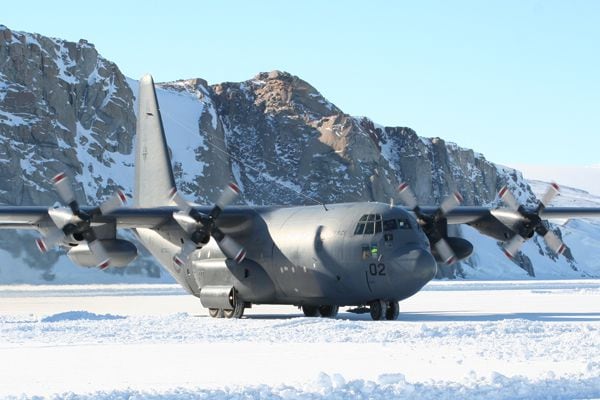A team of 27 climate scientists have embarked on an ambitious 1128km journey across the Ross Ice Shelf to recover critical geological records to help forecast future sea-level rise.
Scientists will camp on the edge of the West Antarctic Ice Sheet, which holds enough ice to raise sea levels by four to five metres.
To obtain this record, they must drill through about 580m of ice, pass through a 55m ocean cavity, and use a special drilling system to retrieve a sediment core from up to 200m deep in the seabed.
“We were making the first ever attempt to obtain a core this deep so far from a base and so close to the centre of the West Antarctic Ice Sheet,” Sensitivity of the West Antarctic Ice Sheet to 2C co-chief scientist, from GNS Science and Te Herenga Waka – Victoria University of Wellington, Professor Richard Levy said.
Research suggests a collapse may be inevitable for parts of the West Antarctic Ice Sheet, especially around the “Doomsday Glacier” (Thwaites Glacier) in the Amundsen Sea, because of nearby warm water.
The water beneath the Ross Ice Shelf remains cold, providing stabilising support for the inland ice of the West Antarctic Ice Sheet.
“Cutting-edge Antarctic frontier science is challenging, and we learned valuable lessons. We’re heading back this year to finish what we started, with an even greater sense of urgency. The climate warning signs are only getting louder,” Levy said.
The team aims to extract insights from sediment layers beneath the Ross Ice Shelf. They will melt a hole through about 580m of ice, pass through a 55m ocean cavity, and use a custom drilling system to retrieve a sediment core up to 200m deep in the seabed.
“Since our last deployment we’ve seen global temperatures reach record highs across the world. Last year, the average increase in Earth’s annual surface temperature exceeded the 1.5C target of the Paris Agreement for the first time since we started routinely measuring temperature with instruments. While this increase may be temporary, we are well on track to permanently cross this threshold in the next five to 10 years,” he said.
Understanding what temperature will trigger the unavoidable melt of the Ross Ice Shelf and the subsequent collapse of the West Antarctic Ice Sheet is critical for humanity.
“Retrieving this sample from such a remote location will help us build a clearer picture of how the West Antarctic Ice Sheet will respond to future warming, which parts will melt first and which parts will remain,” co-chief scientist, from Imperial College London, professor Tina van de Flierdt, said.
The sequence of rocks and mud will reveal how the West Antarctic Ice Sheet behaved during warmer temperatures. If the researchers find marine algae, indicating open ocean conditions, it’s likely the ice sheet retreated.
The core may be hundreds of thousands to millions of years old, representing the last interglacial period about 125,000 years ago, when the Earth was around 1.5C warmer than pre-industrial times — similar to this year’s temperatures because of human-induced climate change.



0 comments
Leave a Comment
You must be logged in to make a comment.